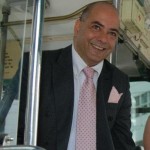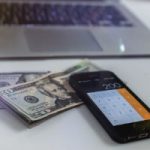Short term loans for financing your company
|11-5-2017 | François de Witte | treasuryXL
 You might visit this site, being a treasury professional with years of experience in the field. However you could also be a student or a businessman wanting to know more details on the subject, or a reader in general, eager to learn something new. The ‘Treasury for non-treasurers’ series is for readers who want to understand what treasury is all about.
You might visit this site, being a treasury professional with years of experience in the field. However you could also be a student or a businessman wanting to know more details on the subject, or a reader in general, eager to learn something new. The ‘Treasury for non-treasurers’ series is for readers who want to understand what treasury is all about.
Our expert François de Witte tells us more about an important task of a treasurer: funding, namely short term loans.
Background
One of the main tasks of the treasurer is to ensure that the company has the required funds to operate. The treasurer will usually contact the banks for this funding. The banks can extend secured or unsecured credit facilities. These can be long term or short term. In the current article, we will cover the unsecured short term loans.

Overdraft lines
The most flexible credit line is the overdraft loan: when providing an overdraft facility, the bank authorizes the company to go below zero on its account up to a certain amount. Overdrafts can be a good way to borrow money for a short period of time. For example, if you don’t have enough money in your current account to cover your outgoings, and are uncertain about when your accounts receivables will be collected, you can negotiate with your bank an overdraft limit. If in that case, you have say 1 million Euro of expenses you can pay them, even if your account balance goes below zero. Once you will collect the accounts receivables, the overdraft position will be settled.
Usually the banks charge in case of use of the overdraft facility an interest rate based upon the internal rate of the bank plus a margin, and in some cases an overdraft fee charged on the total amount of the facility.
Having an overdraft can act as a useful buffer to cover your peak cash needs. It is the most flexible loan, because, in case you have cash inflows, they can be immediately used to reimburse the facility. However if the cash need is more structural, overdrafts are not a very effective way of borrowing, because they may come with a higher rate of interest than some other loans such as the short term advances.
Short term advances
When you have a more structural cash need for a certain period of time, it can be useful to consider short term advances or straight loans. In this case, the bank will extend a short term advances (straight loans) facility.
When the client wishes to utilize this facility, he will ask for a drawdowns amount made available for an agreed upon period at an agreed upon rate. On the required date, the bank will make the amount available, e.g. 1 million Euro, on the account. At the maturity of the short term advance, the borrower needs to repay the advance and the interest. The interest is usually calculated on a benchmark, e.g. Euribor or Libor plus a margin.
The client determines the timing of the drawdowns. Advances are usually extended in the framework of a credit line, although in some cases, the client can just ask a punctual advance to cover a specific need.
Short term advances are less flexible then overdrafts. If you have a short term advance of say 1 million Euro for 1 month, and 15 days later you receive a large collection of say over 1 million, you cannot reimburse your short term advance, and will hence during the last 15 days pay interest on your short term advance, without any or almost any remuneration on your current account. For this reason, we recommend to use short term advance for long(er) term cash needs.
Conclusion
Overdraft facilities are the most flexible loans, but are quite expensive. If you have long(er) term cash needs, it might be useful to consider straight loans, as they are usually less expensive.
There exist many other solutions to finance the short term needs of your business, such as the financing of accounts receivables and factoring. This will be covered in a separate section.
 François de Witte – Founder & Senior Consultant at FDW Consult & Flex Treasurer
François de Witte – Founder & Senior Consultant at FDW Consult & Flex Treasurer
[button url=”https://www.treasuryxl.com/community/experts/francois-de-witte/” text=”View expert profile” size=”small” type=”primary” icon=”” external=”1″]
[separator type=”” size=”” icon=””]

 MIFID II – you read about it frequently. And there are more abbreviations: you will also find MIFIR and MIFID I. As a banker you will know what we are talking about. As a treasurer or financial professional you are supposed to understand what MIFID II will bring you. We think it is time to zoom in on this subject and present a short summary.
MIFID II – you read about it frequently. And there are more abbreviations: you will also find MIFIR and MIFID I. As a banker you will know what we are talking about. As a treasurer or financial professional you are supposed to understand what MIFID II will bring you. We think it is time to zoom in on this subject and present a short summary. Annette Gillhart – Community Manager treasuryXL
Annette Gillhart – Community Manager treasuryXL

 Now also The Netherlands (I am a Dutchman!) has its broad-based collaborative blockchain initiative. At the end of last month (30 March 2017), there was the official kick-off of the National Blockchain Coalition (“Nationale Blockchain Coalitie” in official Dutch language) (NBC) at the premises of the Ministry of Economic Affairs in The Hague. The National Blockchain Coalition is a collaboration of more than 20 organisations, governmental institutions and knowledge centres. At the same event the action agenda was handed over to The Dutch Economics Minister Henk Kamp on behalf of the partners of the NBC.
Now also The Netherlands (I am a Dutchman!) has its broad-based collaborative blockchain initiative. At the end of last month (30 March 2017), there was the official kick-off of the National Blockchain Coalition (“Nationale Blockchain Coalitie” in official Dutch language) (NBC) at the premises of the Ministry of Economic Affairs in The Hague. The National Blockchain Coalition is a collaboration of more than 20 organisations, governmental institutions and knowledge centres. At the same event the action agenda was handed over to The Dutch Economics Minister Henk Kamp on behalf of the partners of the NBC.






 GMU, het formaat wat al jaren door ING wordt gebruikt als formaat voor de bankafschriftinformatie, wordt vanaf 1 juli niet meer door ING aangeboden. Dit formaat wordt al tientallen jaren door ING geleverd en wordt ‘ingehaald’ door formaten die uitgebreidere (incasso) informatie kunnen geven. Wat houdt deze verandering precies in? En wat zijn oplossingen voor het verdwijnen van GMU?
GMU, het formaat wat al jaren door ING wordt gebruikt als formaat voor de bankafschriftinformatie, wordt vanaf 1 juli niet meer door ING aangeboden. Dit formaat wordt al tientallen jaren door ING geleverd en wordt ‘ingehaald’ door formaten die uitgebreidere (incasso) informatie kunnen geven. Wat houdt deze verandering precies in? En wat zijn oplossingen voor het verdwijnen van GMU? GMU-converter
GMU-converter Mark van de Griendt – Cash Management Expert at
Mark van de Griendt – Cash Management Expert at 
 Last Friday I had the pleasure of visiting the Dutch Fintech Awards. Diversity, technology, marketing and entrepreneurship are the key words that in my opinion describe the event best. Both contenders as well as audience were mainly Dutch. Although the language used was English, the communication style, also due to the moderator, was very “Dutch direct”. This kept the program entertaining during the pitches of companies of less relevance for me.
Last Friday I had the pleasure of visiting the Dutch Fintech Awards. Diversity, technology, marketing and entrepreneurship are the key words that in my opinion describe the event best. Both contenders as well as audience were mainly Dutch. Although the language used was English, the communication style, also due to the moderator, was very “Dutch direct”. This kept the program entertaining during the pitches of companies of less relevance for me.
 Hubert Rappold from TIPCO Treasury & Technology, puts the case for a treasury information platform (TIP), which acts as an information hub for the treasury department and reduces companies’ reliance on “Excel-based monstrosities” that are doomed to fail.
Hubert Rappold from TIPCO Treasury & Technology, puts the case for a treasury information platform (TIP), which acts as an information hub for the treasury department and reduces companies’ reliance on “Excel-based monstrosities” that are doomed to fail.
 Hubert Rappold – CEO at
Hubert Rappold – CEO at